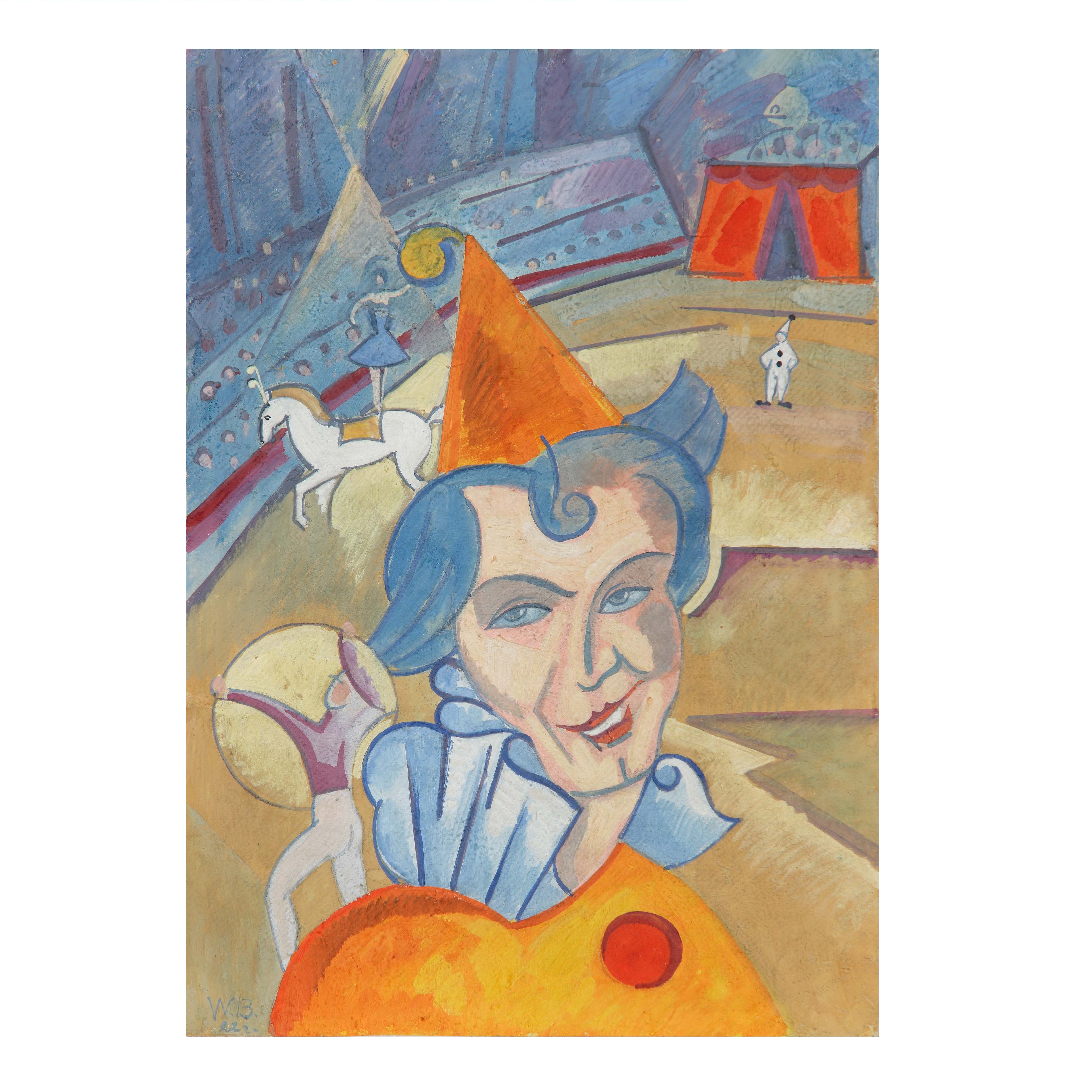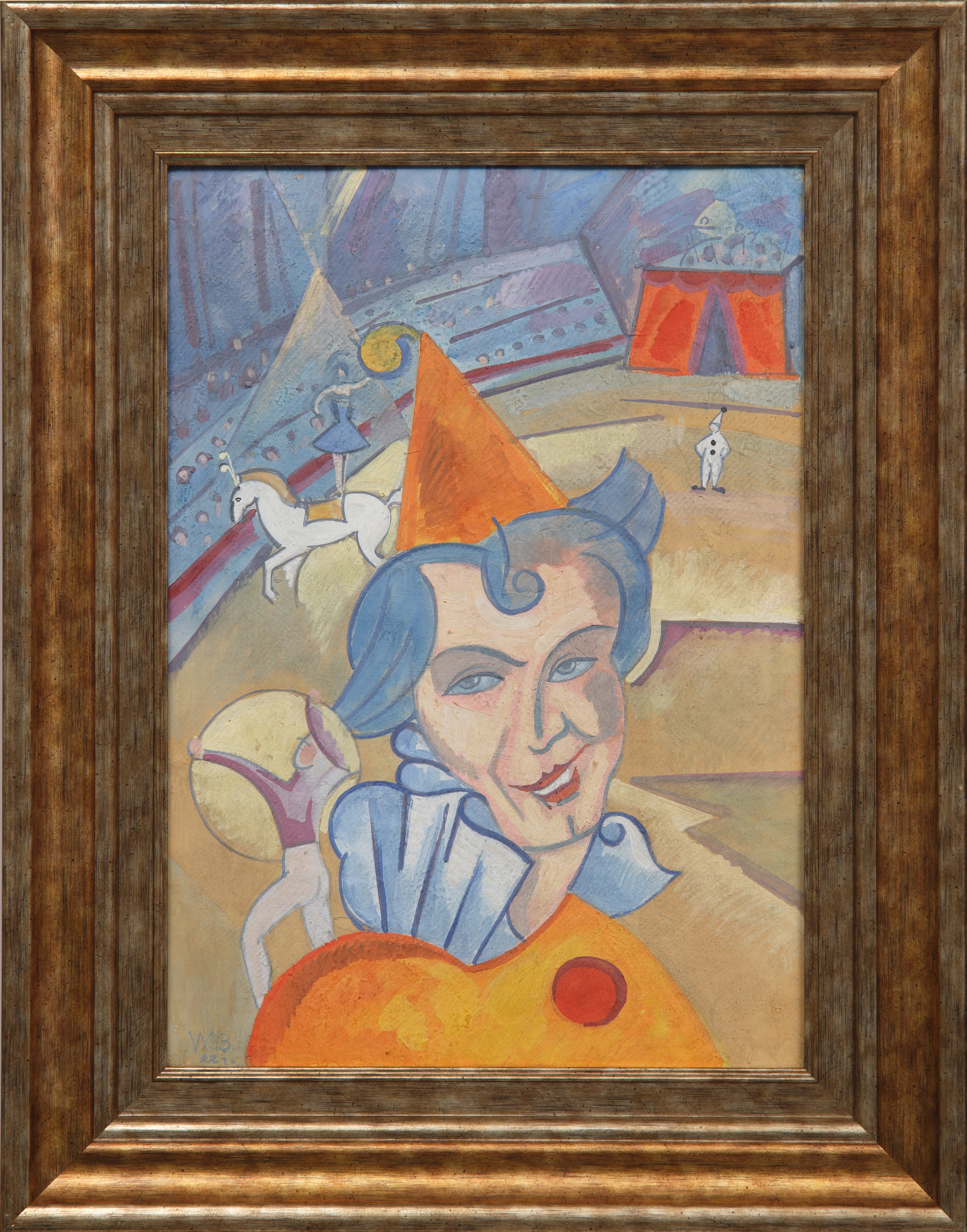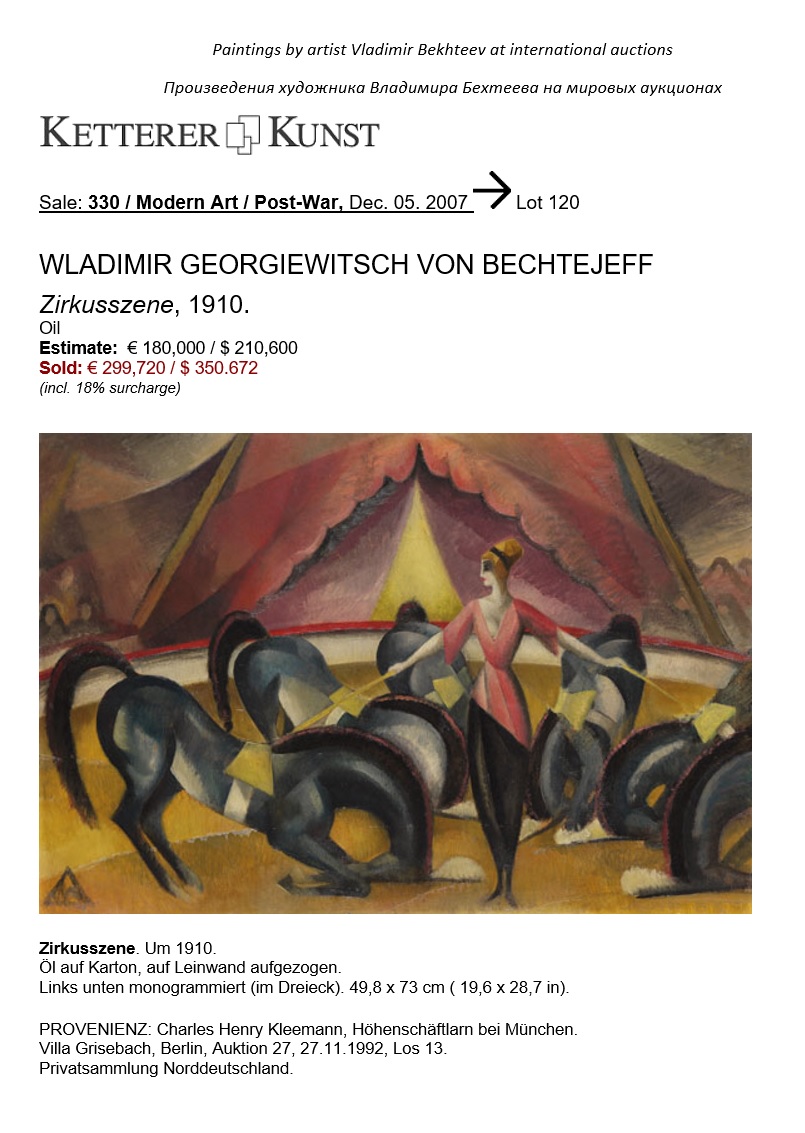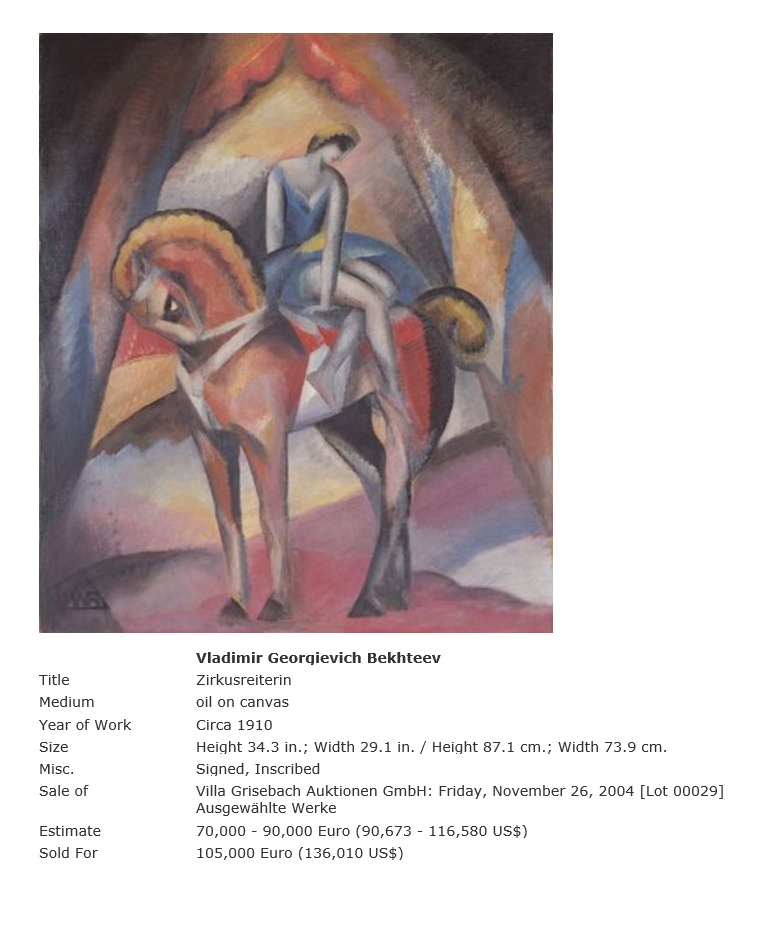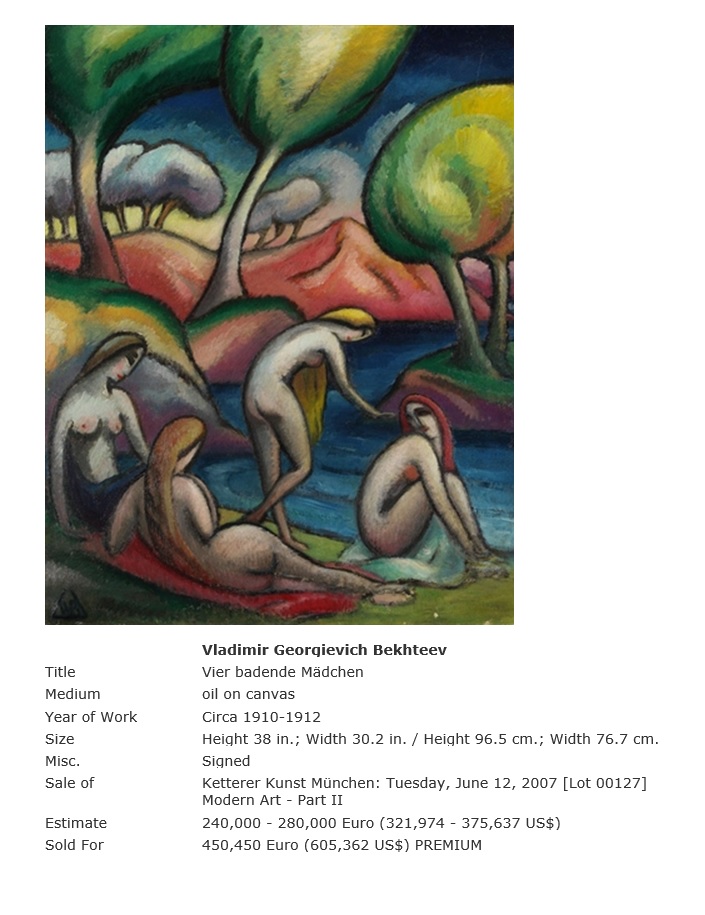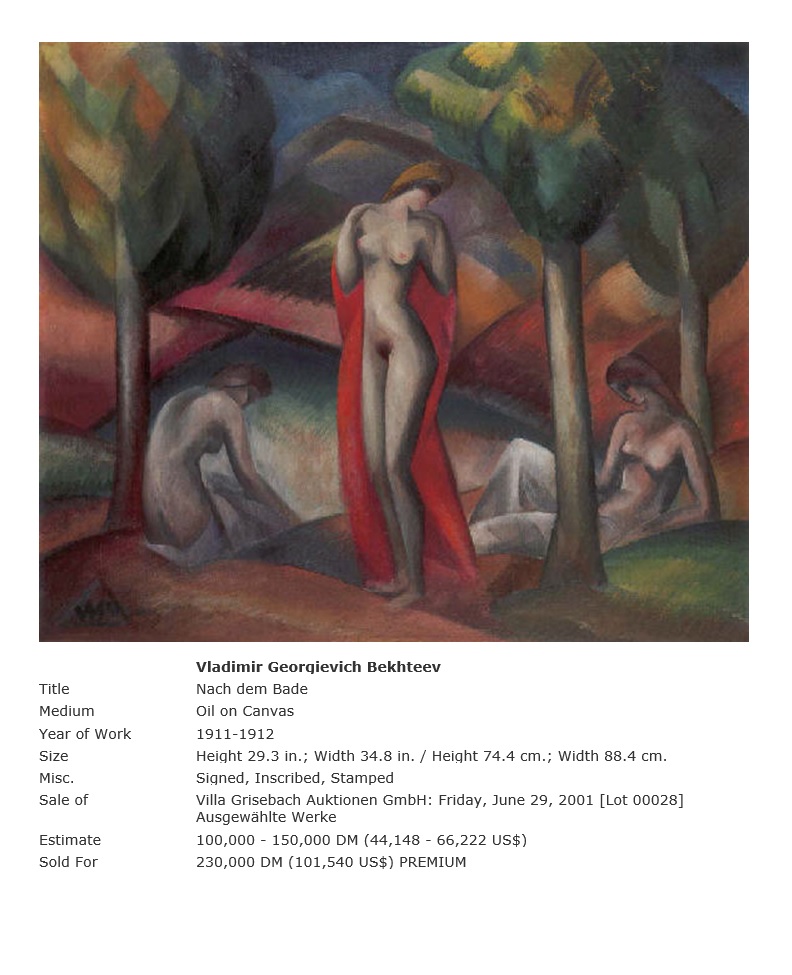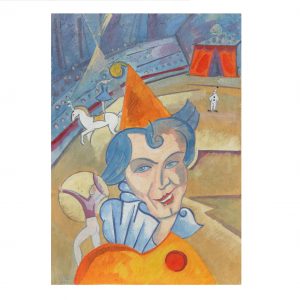Bekhteev Vladimir Georgievich
1878–1971
Painter, graphic artist, set designer
He is a descended from a noble family. He studied at the Moscow Secondary School (1888-1894), the Nikolaev Cavalry School in St. Petersburg (1894–1896). After graduation, he served in the Cavalry Mitava Regiment in Czestochowa, in 1901 he retired in the rank of Lieutenant. From that time, he began to systematically paint and draw.
He took private lessons in the studio of Y.F. Cionglinsky (1901), filed an admission to enrollment in the Imperial Academy of Arts, which was rejected. In 1902, he moved to Munich, continued his studies in the studio of Professor H. Knirr, then at the school of F. Kormon in Paris. During 1906-1908, he traveled to France, Italy, Tunisia. In those same years, he become close to A. G. Javlensky, M. V. Verevkina, V. V. Kandinsky.
From 1905, he has been a participant in exhibitions (the 2nd exhibition of the “New Society of Artists” in St. Petersburg). Also, a member and exhibitor of the “New Art Society” in Munich (1909/1910, 1910, 1911). He was close to the “Blue rider” group. He participated in following exhibitions: „The Jack of Diamonds“ (1910/1911) in Moscow, “New Secession” (1911/1912), exhibitions in the gallery Der Sturm (1912–1914), First German Autumn Salon (1913) in Berlin, “Baltic Exhibition” in Malmo (1914).
At the beginning of the First World War, he was called up to the army and returned to Russia; he served as a lieutenant in the reserve, in Borisoglebsk. In 1917, he joined the Red Army.
In 1918-1921, he worked as the head of the metropolitan department of museums and the preservation of monuments of antiquity and art, at The People’s Commissariat for Education (Narkompros). For some time, he acted as head of the artistic part and main artist at the first state circus in Moscow (1921–1922).
In 1922, he worked a lot in the field of book and magazine graphics. He worked with publishing houses such as “Circle”, “Mospolygraf”, “Young Guard”, Academia, (General State Publishing House of Narkompros), Detgiz (Publishing House for Children’s Literature), All-Russian Central Council of Professional Unions and others. Created cycles of illustrations for the Japanese fairy tale “Unbeatable Bogatyr” (1923), for the books of Y. Fin “Phoenician Ship”, “Lights in the Mounds” (1928–1930), E. Maine “Roman Lady Byron”, Gote T. „Madmuazel de Mopen“, C. Nodier „Jean Sbogar“ (all done during 1932–1933), Longus „Daphnis and Chloe” (1933), G. Sand „Consuelo“ (1934), V. Hugo “Cathedral of the Parisian Our Lady” (1934–1935) and other. He also did illustrations for the books of M.Y. Lermontov, L.N. Tolstoy, and A.S. Pushkin.
He went on business trips to the Caucasus (1929, 1932, 1935) in order to create, and he visited the metallurgical plant Ilyich in the city of Sartan (1930–1932) where he did series of watercolors and drawings.
In 1939-1945, he lived and worked in Chimkent. After the end of the Great Patriotic War, he returned to Moscow. In 1955 – 1960s, he created the “Baltic” series of watercolors (Palanga, Pärnu, Dzintari). He was a member and exhibitor of Graphic Artists Association (1926–1928), Association “4 Arts” (1928–1929). He participated in following exhibitions: The 5th State Exhibition of Pictures “From Impressionism to abstract” (1918/1919) “Crimea and the Caucasus – health centers of the USSR” (1931), “Artists of the RSFSR for the XV years” (1933), Soviet illustration of the artistic literature for 5 years (1931–1936)(1936), the All-Union Exhibition to the 150th anniversary of the birth of A. S. Pushkin (1949), All-Union Art Exhibition dedicated to the 40th anniversary of the Great October Socialist Revolution (1957/1958), the All-Union Book Exhibition (1958), Republican art exhibitions “Soviet Russia” (1967, 1970) in Moscow and many other.
Exhibitor of many international exhibitions and exhibitions of Soviet art abroad as well: International Exhibition of Decorative Arts in Paris (1925), “Art of Book” in Leipzig and Nuremberg (1927), XXVIII International Art Exhibition (Biennale) in Venice (1956); Exhibitions of Soviet Art in Amsterdam (1929), Malmo (1930), Konigsberg (1932), USA (1933, San Francisco, Chicago, Philadelphia, New York), France (1933, Paris, Lyon, Bordeaux) in London (1934), Jakarta (1956), Warsaw (1958).
He conducted personal exhibitions in Moscow (1955, the 50th anniversary of his creative activity; 1961, 1970), Leningrad (1962, 1969), Kyiv (1964). In 1969, he was awarded the title of Honored Worker of the Arts of the RSFSR.
His paintings were shown at the exhibitions: „Der Blaue Reiter. In der Stadtischen Galerie im Lenbachhaus“ (1966), „Der Blaue Reiter in Lenbachhaus“ (1974) in Munich, „Der Blaue Reiter“ in Bern (1987).
Bekhteev is one of the greatest masters of the easel and book graphics of the first half of the XX century. In his early work (during 1910s – the beginning of the 1920s) he was close to cubism, abstractionism, constructivism. From the second half of the 1920s, he turned to figurative art in line with the artistic trends of that time. In the book illustration, which was his the focus in the 1930s – 1950s, he showed himself as a skillful stylist, finding for each of the painting an individual artistic approach. In the easel graphics, he acted as an excellent colorist and drafter with his own style. Fine color transitions, exquisite tonality, strictness of composite construction, harmonious mass distribution — characteristic features of his paintings.
The works of Bekheev can be found in many private and museum collections, including the State Tretyakov Gallery, A.S. Pushkin museum and others.
